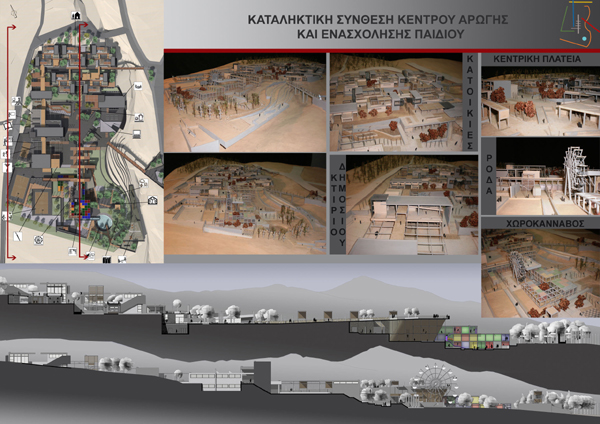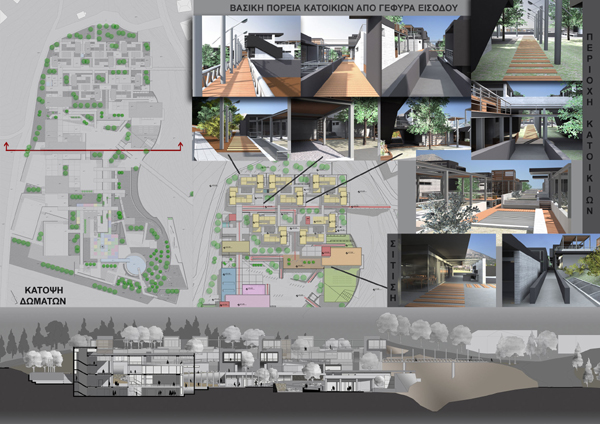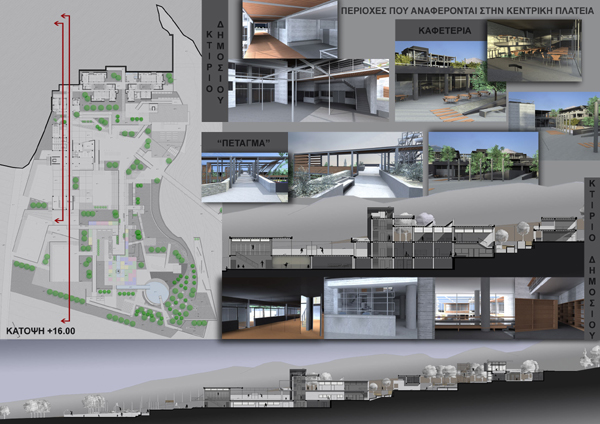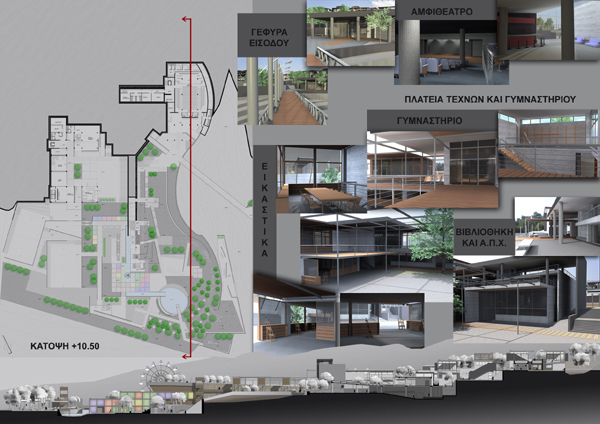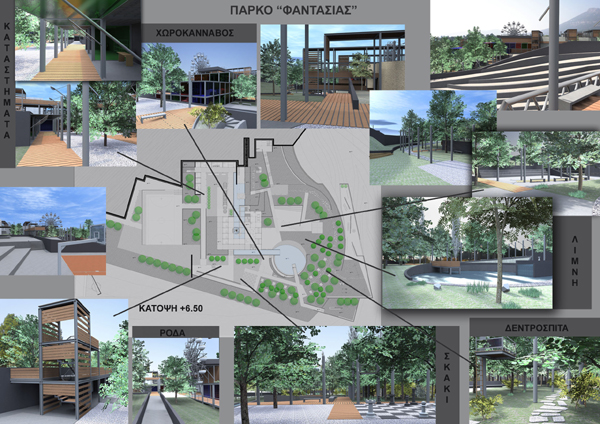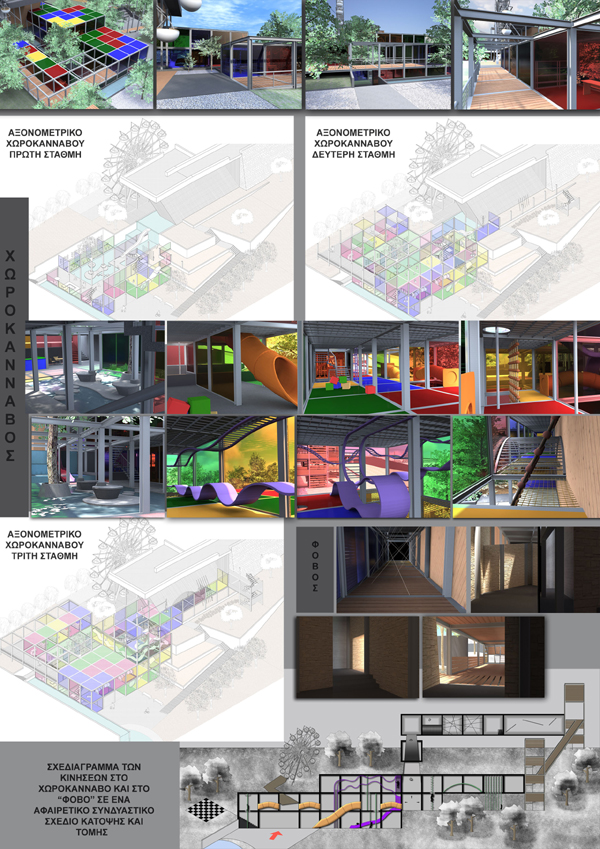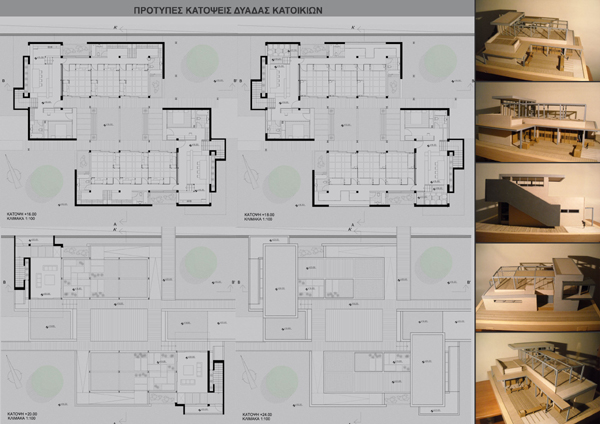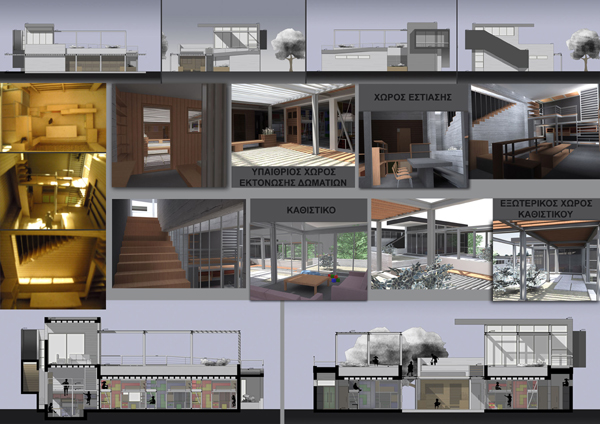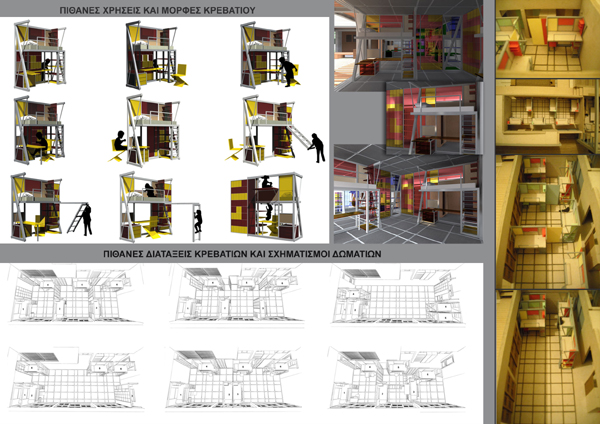STUDENTS PROJECTS
PROJECTS 2011
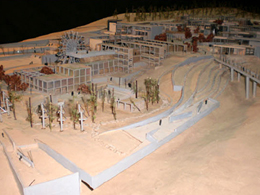
01 February, 2012
Assistance and creative occupation centre for children
The project is about a place which will take care of abused children without homes. We aim for their psychological health, through planning a "Neverland".
Students: Kratimenou Irene, Markantonatou Aliki, Tzolou Alexandra
Supervisors: Panos Exarhopoulos, Nikos Thomas, Konstantinos Keventsidis
Presentation Date: July 2, 2011
Demokritus University of Thrace, School of Engineering, Department of Architectural Engineering
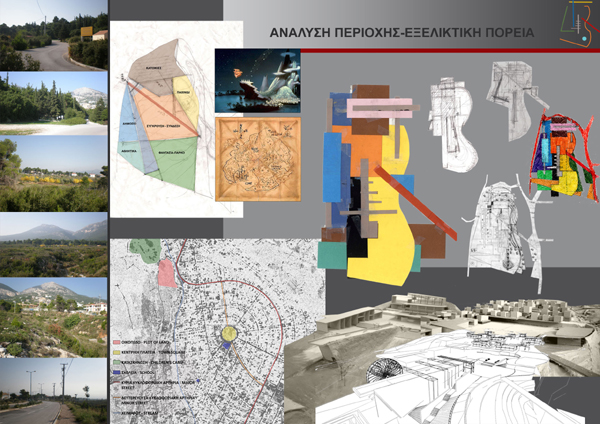
The choice of the topic arose from our desire to create something concerning children along with the lack of such an institution in the greater Athens area. An institution which will be committed to take care of children which by decision of welfare, have been separated from their parents due to domestic abuse and have ended up without shelter.
Considering the operation of SOS-Villages that already exists in Greece, we realized that these places usually provide only shelter to children, who reside by six along with a volunteer "mother", though their basic education (school) takes place outside the building complex. Similarly, we recommend the school education to be performed outside the building complex so that children can socialize properly, but we also suggest space for other activities which will be accessible to children who don't inhabit in the institution. In this way we aim to make the place known, hoping to grant more private subsidies and some income from the rest of the activities that are offered, while promoting the socialization of the children-residents. The objective is the better development of children's personality development, as well as the creative and productive use of their free time. This is achieved by organizing, both inside and outside the institution, entertaining, educational and cultural activities which promote the personal interests, the talents of the children and their cultivation, therefore significantly contributing to the development of their sociability and their smooth integration into society.
As the physical location of this project the Thrakomakedones area was chosen because it combines the natural landscape of Parnitha (one of two National Parks in Athens) with a developed urban landscape. This area is characteristic for the fairly good economic status of its residents, its clean environment and its interesting urban design. The site was chosen to be next to the municipality of Thrakomadones, from which is separated by a stream and a main route. At the north of this site, you can find the children's summer camps, which in combination with our suggestion, can create a large area devoted to the children.
In the site we have chosen we tried to create a miniature model of society so that the children can be prepared for their life after the institution.
In other words, we wanted:
- the entrance to be angled in relation to the stream, so that it is in harmony with the urban planning of the area.
- the residences' area to create a sanctuary for the children and to be private, as well as to be in higher ground so that the children can observe the area.
- the workshops and the educational areas to have a more formal style, so that they underline their public character. So, they are placed in a way that they create a protective corner along with the residences relatively to the entrance and the town.
- to place a square where the public and private space unite and merge together and from where one can pick the section he wants to visit.
- in the south and lower area of the site to place the park, an area where the children's imagination is expressed, so that they can have a higher view of the forest and as they descend into the park they can feel that they enter in an imaginary world.
We discovered that most psychologists make use of the story of "Peter Pan" to analyze the psychology and understand the behavior of such children. This is because the tale deals with the relationship between children and parents and the adults in general, presenting characters like the "the boy who wouldn't grow up", or the child that acts like an adult and vice versa. In this tale we've located some interesting notions which matched with the project's concept that we had in mind at that time. For example:
- Peter Pan, the child, wants to feel free, like he is flying and that he has to be above everybody.
- Peter Pan, distinctively distinguishes the boundaries of private and public areas. In his territory he is a kind free minded captain, who lives in his ideal world, while, in contrast, when he visit more public areas he comes in touch with the reality and he usually comes into conflict with it while learning and evolving.
- As an adult, Captain Hook, deep inside is a child, therefore he must be free to express himself as a child so that communication with younger ages is possible.
Based on these and much more that we discovered during our research, we concluded that in all ways we were creating a "Neverland".
In the beginning, the site was divided in sectors and that defined the master-plan, regarding urban planning, considering the big size of the site (about 16.000 m2). The size of the site was the biggest difficulty that we had to face during the process of composition and the variety of the building sizes demanded the use of a common design style for the whole site. We decided to transform the large basic building stock into many smaller buildings, which overlap with each other, to connect directly the interior with the exterior space and to achieve a harmonic sequence. Also, we chose to use a balanced combination of three basic materials (concrete, wood, metal), which in addition to the above lead us to achieve our aims. Everything was designed for children therefore there couldn't be another style except for the "playful style" and no other scale than the human scale. The last part of the project was dedicated into planning the smaller spaces and was especially focused in their detailed interior design, so that they best serve the users and promote the socialization of the children-residents.
The ten (10) residences were placed to the North sector of the site, divided into two parallel zones, with four (4) meters difference in elevation between them and both parallel to the east-west direction. This way, a clear linear boundary was created to the North edge of the site, while the elevation difference occurred due to the morphology of the site's terrain and from our desire to give all the residences the best and unobstructed view. Each residence was formed into two different levels. In the ground floor the bedrooms of the children and "mother" were placed as well as the kitchen and dining room. In the top floor the living room was placed which is extended to the two green roofs that are surrounding it. The residences are joined into pairs creating between them a semi-open yard in a direct contact with the bedrooms. Two parallel paths, made of wooden planks, go through the lower levels of the residences, which in addition to the rest paths, sometimes roofed and sometimes not, create the path network of the outdoor ground level. A similar path network (deck) exists on the top level of the residences, which it connects all of them together on the level of the terrace. All these decks are connected vertically by similar structures that also contain the stairwells. This way all the residences were connected, unified, giving the child-residents many choices for the route they can choose to go from one place to another. A fact that helps and excites their imagination, promotes entertaining playing and their socialization. The bedrooms were designed with the same philosophy, as each one of them is a flexible, polymorphic, interactive room, which can be used as a single unified room or can be divided into two or three separate segments, which can be used as independent bedrooms. So in the same philosophy a piece of furniture was designed, which is a bed and a desk at the same time, which is every child's personal smaller room. These pieces of furniture are mounted onto rails and can be moved around in the room giving the children the opportunity to form their room as they like.
Perpendicularly to the residences the building which refers to the public was placed. These two, contrasting in character buildings (private and public) were linked by the social workers', the director's and the doctor's residences, because they are related to both of them. The public building was divided into three basic building stocks directly linked together by open or roofed pathways. These building stocks form two small squares. The first is in direct contact with the central and bigger square of the site and serves as a transitional area and as an entrance, from the square to the classrooms and the library. The second area has a three meter (3m) difference in elevation from the central square and is related to the classrooms of music, arts, dance and the gymnasium, as well as to an exhibition showroom which can host the children's projects. This square has tiers so that it can be used as an amphitheater for any related activities. The classrooms are designed to be facing the amphitheater and when the weather permits it, the lessons can be performed outdoors. The gymnasium is next to the courts and the dance hall, with which it can be merged to form a bigger unified indoor area.
In the site's entrance a square was designed both as the outdoor space of the theater's foyer and as a transitional area for the ones that come from the town and head towards the central square or the park. The park is designed in such a way that is able to offer many different activities to the visitors no matter their age, e.g. playground, tree-houses, a Ferris Wheel, outdoor human size chess and much more. Special care was taken during the design of the park's main theme, of a 3 dimensional grid, which serves as a maze. It is actually a play area with a 3.20m grid, which contains games like slides, horizontal bars, ladders, nets and much more. The combination of the possible pathways in this area along with the relations that it creates with the open and semi open spaces, form an organized playground with various available activities (from climbing to playing with the waters). One of the possible pathways inside the grid leads to one of the exits, through an area where the limited natural lighting enters in certain angles and towards certain directions causing reflections in mirrors and on the water. Along with the big stonewall we tried to generate the impression of an underground pathway towards the light, the exit. The existence of this place was considered necessary, so that the child along with the parents, having gone through the stress which the place causes, to be able to overcome some of his phobias and to regain trust to his parents and his self confidence. Over this area and in direct symbolic contrast with him, lies the "runway". This is an inclined pathway which begins from the central square and ends up to a "balcony" with a full park view. The objective of this design is to cause to the user the feeling of take-off, the feeling of absolute freedom as he is ready to fly like Peter Pan. There were metal structures placed perpendicularly to the "Flight" and in regular intervals in order to shade in rhythm the pathway bellow and find the human scale once again. These structures, as in the residences' area, are stairwells which together with the Ferris Wheel, link vertically the "runway" with the park.
From all the above, it is clear that the planning of the present project (Diploma Thesis) relied on a theoretical base which had as a main subject the psychology of an abused child and the effort to restore his mental and psychological health.
